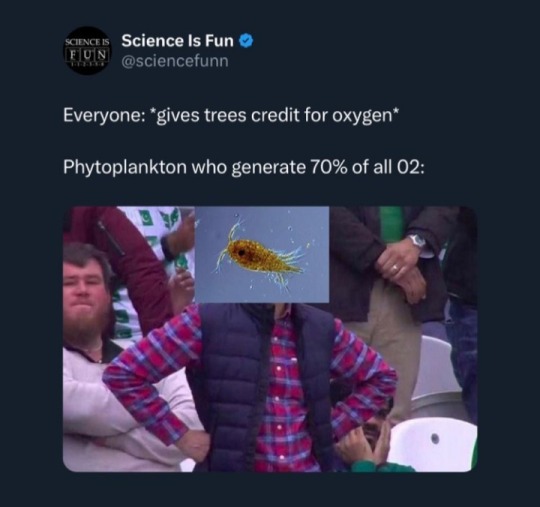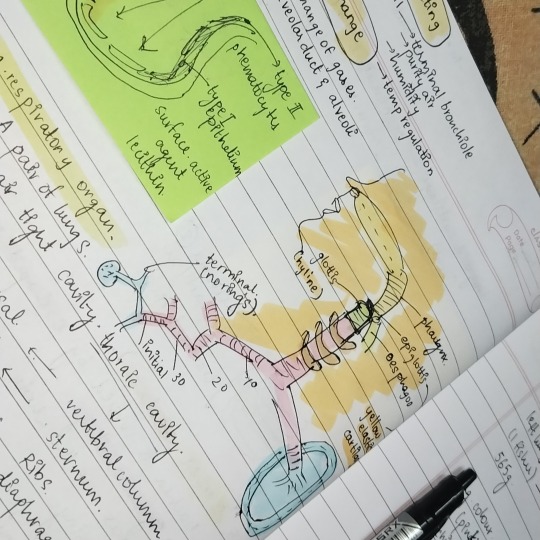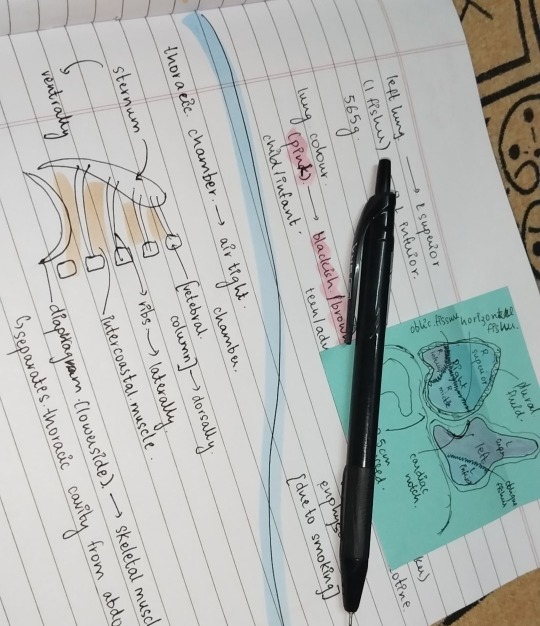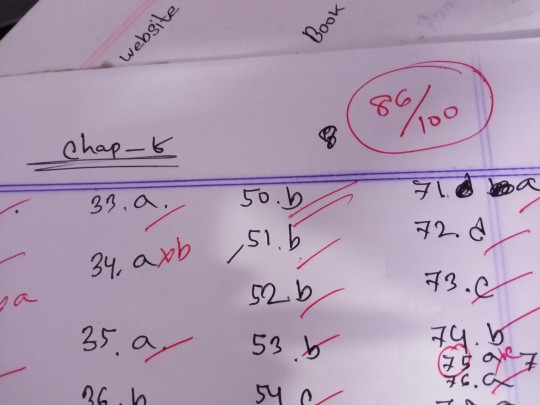#zoology studyblr
Explore tagged Tumblr posts
Text

Mind mapping/ brainstorming today.
Struggled a bit this evening, with feeling like I'm dumb or inadequate, probably a bit of imposter syndrome. It's been nearly 5 years since I graduated from my bachelor's degree, so it's tough jumping back into studying again, and in a self direct way when doing research especially. I feel like there's so much base knowledge that I've forgotten and have to relearn. I wonder what my supervisor thinks when I give him a blank stare in answer to his questions 😭
I know it will get better as I get back into the flow of things again, but holy cow is it a steep learning curve >.<
9 notes
·
View notes
Text
This school of scalloped hammerheads was not a sight we expected to see, but what a sight it was! Experts are actually unsure why scalloped hammerheads school, but some theorize they school this way as juveniles, and continue the behavior into young adulthood!
#hammerhead shark#scalloped hammerhead#sharks#chondrichthyes#elasmobranchs#marine biology#marine bio#marine biology studyblr#marine bio studyblr#biology#zoology#marine life#animals#scuba diving#marine conservation#ocean
2K notes
·
View notes
Text

Day 11/100 of productivity 🐣.
Today i studied -9.30 hrs. I had my Zoology exam Just after 17 hrs of Botany. I tried my best rest god's will.
#self improvement#highlights#study#student#late night studying#student life#exam season#study aesthetic#backlog#exams#dark academia#light academia#study life#life series#life#100 days of productivity#botany<zoology#zoology#examing#studybrl#studyblr#study hard#studying#study motivation#study habits#study mode#biology#bioblr#mock tests#testing
85 notes
·
View notes
Text
Some Zoology Vocabulary

for your next poem/story
Aestivation - A period of summer dormancy. Summer dormancy is often exhibited by animals when conditions become unfavourable.
Anthroponosis - An infection or disease that is transmissible from humans to animals under natural conditions.
Arboreal - Used to describe an animal that lives in trees. There are many different arboreal invertebrates including species of ant, tarantula, stick insect and many different species of moth and butterfly.
Book lungs - The main respiratory organ in most arachnids (spiders and scorpions); get their name from the fact that the stacked plates have the appearance of the closed pages of a book.
Coelom - Fluid-filled cavity within the body of an animal; usually refers to a cavity lined with specialized tissue peritoneum in which the gut is suspended.
Eyespots - Markings on an insect, usually on the surface of the fore or hind wings, that resemble a mammalian eye; used to scare off potential predators by making the insect appear to be part of a much larger organism. In some species the eyespots are concealed when at rest but can be 'flashed' at a predator in an attempt to scare them away.
Haemolymph - Insect blood and is the fluid that fills the haemoceol; transfers nutrients from the insect gut to the organs, takes away waste and also transmits hormones.
Hypogeic - Describes organisms that live underground (usually within the soil).
Lepidopterist - An entomologist who specialises in studying butterflies and moths. The name lepidopterist is derived from the name of the Order of butterflies and moths, Lepidoptera.
Osculum - The main opening through which filtered water is discharged. Found in sponges.
Parapodia - A sort of "false foot" formed by extension of the body cavity. Polychaetes and some insect larvae have parapodia in addition to their legs, and these provide extra help in locomotion.
Saproxylic - Describes invertebrates that are dependent on dead or decaying wood (or dependent on other organisms that are themselves dependent on dead wood). These invertebrates may not be dependent on the wood for their entire life cycle but at least some stage is dependent on wood. A good example of this are the larvae of some beetles that feed on decaying wood. The adults may feed on other things (such as nectar).
Thanatosis - "Playing dead"; displayed by many species of insect when they feel threatened by a potential predator. The insect will often fall to the ground and tuck in any protruding legs or antennae. The insect will remain like this for some time, even when prodded or poked by the predator. Some time after the predator has lost interest the insect will start moving again and make its escape. It is commonly found among the beetles - ladybirds are particularly good at 'playing dead'.
Venation - The arrangement (number and position) of veins within an insect's wing; often used as a way of differentiating between species. In early insects, the veins running down the wing (longitudinal veins) were connected by a series of cross veins. Most insect groups have lost, or dramatically reduced the number of, these cross veins. However, some insects such as dragonflies and damselflies have wings that contain many cross veins.
Xylophagous - Describes animals that feed almost exclusively on wood. Insect examples of such animals include furniture beetles and death watch beetle.
Sources: 1 2 3 ⚜ More: Word Lists
#zoology#terminology#word list#writing reference#spilled ink#dark academia#studyblr#langblr#linguistics#writeblr#literature#writers on tumblr#writing prompt#poetry#poets on tumblr#creative writing#writing inspiration#writing ideas#writing inspo#light academia#john frederick lewis#writing resources
90 notes
·
View notes
Text

Unfairness and sadness
#science#biology#phytoplankton#zoology#oxygen#studyblr#insidesjoke#memes#meme#funny#student memes#humour#humor#comedy#most popular
365 notes
·
View notes
Text
distracting you from my messy notes.



what I did this week :
academics
attended a 4 hour lecture in the morning
went to library to do physics and botany
revised breathing and exchange of gases
revised biological classification
watched lectures from pw and biofairy
non academics
journaled this week
watched s1 of kota factory
re watching operation mbbs (for 1938 time)
finished all episodes of skip to loafer
🎧 🍀 : where have you been - rihanna
#studyblr#study blog#study aesthetic#spotify#study motivation#premed#student#student life#study desk#study notes#study tips#med studyblr#studyspo#zoology#academic validation#chaotic academic aesthetic#light academia#high achiever
85 notes
·
View notes
Text
Today's day was a bit productive I did self study for about 6 hours which is an improvement cause since few days I was slacking off alot....
I attended my physical lectures after a week today , they were about 4 hours long....
Non academically I started reading "Norwegian Wood" by Murakami today.... Seems like a good book to me....
Also started preparing for an upcoming MUN but still there's a lot of work left to do



Also clicked a few pictures of moon on my way back home <3


Moon is beautiful isn't it ?
All the pics are by me
#studyblr#desi aesthetic#desi people#desi tag#desi tumblr#desi teen#desi shit posting#desi academia#indian tumblr#desi core#desiblr#dark academia#light academia#light acadamia aesthetic#chaotic academia#chaotic academic aesthetic#study blog#study motivation#studyspo#study aesthetic#student#student life#studying#study notes#zoology#Studyblr
58 notes
·
View notes
Text
Everything that living organisms do, atoms do. Any question that cannot be reformulated as a question about the state of certain collections of atoms is an ill-posed question.
31 notes
·
View notes
Text
wait anatomy is actually so fun to learn about !!
#own post <3#mithistudies#cbse#cbse school#cbse board#cbse education#indian students#science student#anatomy#biology#zoology#study hard#study blog#academic#studying#student life#student#studystudystudy#studyspo#studyspiration#studyinspo#studyblr community#studyblr#study aesthetic#realistic studyblr#mithi's own
20 notes
·
View notes
Text
starting to compile all the textbooks ive gathered either for classes within my programs or things ive downloaded out of personal interest. would anyone be interested if i made the drive public? its still small as of now but im working on it.
subjects so far include but arent limited to: phys/bio & forensic anthropology or archaeology, osteology, paleopathology, zooarchaeology, paleontology, biology, and history/politics/culture. may add some of my language textbooks also.
#studyblr#study blog#langblr#langblog#language learning#languageblr#studyblr community#anthropology#anthro#cultural anthropology#archaeoblr#archaeology#zoology#osteology#forensic anthropology#forensics#autistic student#uniblr#paleontology#paleoblr#bioarchaeology#biological anthropology#biology#textbook#college#university#studytwt#bookblr#stemblr#stem academia
14 notes
·
View notes
Text


Studying with the help of my research assistant
#studyblr#uni#zoology studyblr#ecology#bats#chiropterology#laptop#notebook#dog#research degree#get that honour like zuko trying to find the avatar#honours
4 notes
·
View notes
Text
Today I got to visit the Georgia Aquarium and do a little behind-the-scenes tour! This aquarist has the awesome task of feeding one of the resident whale sharks - no easy task, but they've employed a pretty ingenious track system of lines strung across the surface by which aquarists can pull themselves across on inflatable boats to keep ahead of one of the ocean's largest filter feeders!
#georgia aquarium#marine biology#aquarist#whale shark#zoology#animal husbandry#marine bio#marine biology studyblr#marine bio studyblr#biology#marine life#animals#nature#aquarium#conservation#ecology#marine conservation
191 notes
·
View notes
Text


24 January 2o25✨


Studied 6 hr 30 min. I know i was lost..i was! But lets start again✊
Studied;- ◑Botany- tissue✔ ◑Physics-cp3✔ ◑ICT - HTML code revise.✔
✪Got 86/100 on Botany🧫 & 88/100 on Zoology 🩻
And that's 7 to 4 am a day i studied all night 👏🐧
#self improvement#highlights#study#student#late night studying#student life#exam season#study aesthetic#exams#backlog#dark academia#light academia#study life#life series#life#botany<zoology#zoology#studybrl#studyblr#study hard#studying#examining#all nighter#6 hrs of study#study motivation#ict#physics#mental peace#trying again#trying
27 notes
·
View notes
Text


Tuesday | 02/11 | 2:24 a.m.
Hello friends 🌙
I know I disappeared again. But, actually, I was really busy with my assignment. We had to submit an assignment report for ESDM. My topic was the local fauna ecosystem. I had to spend about 13 consecutive hours sitting in front of my laptop researching and writing a Word file for this report. I was so tired. Desk jobs are not for me. Phew...
Anyway, it turned out to be great. My professor really guided me on this one, and I had fun.
I haven't really studied much today, so I am making up for that right now. I am studying ESDM.
P.S. I have been obsessed with Jungkook lately. It's not even surprising...he is perfect. Who wouldn't be obsessed? 🥹💕
#—i&i daily update 🌱#—i&i ramblings 🫧#—i&i study routine 🍀#study blog#study motivation#studyblr#dark academia#study aesthetic#study inspiration#study with me#studying#study#study space#zoology#zoology student#uni life#university#uni diaries#college#academic assignments#academics#chaotic academia#student life#student#south korea#korean#jungkook#bts#seven
10 notes
·
View notes
Text

Pygospila tyres
Pygospila tyres, also known as Spotted Grass Moth or Chequered Snout Moth, is a vibrant moth species from the Crambidae family, calls the rainforests of Southeast Asia its home—from Hong Kong and India to Thailand and Queensland, Australia. First described over 240 years ago by Pieter Cramer in 1780, this moth has roots tracing back to the Coromandel region of India.
ཐི༏ཋྀ
10/07/2024 (06:58 a.m.)
‧₊˚ ☁️⋅♡𓂃 ࣪ .༊·˚
#aes#trip#m#tumblr#entomology#conservation#lepidoptera#protect nature#photography#curators on tumblr#nature#naturecore#rainymood#moth post#insect#biology#zoology#studyblr#study aesthetic#motivation#cottage witch#positivity#original photographers#hiking#female photographers#landscape#explore#colourful#pretty
13 notes
·
View notes
Text

But does the frog know all this?????
12 notes
·
View notes